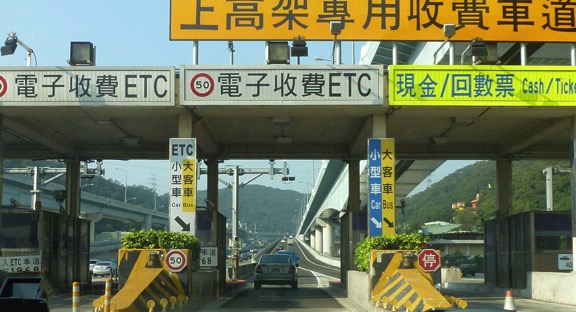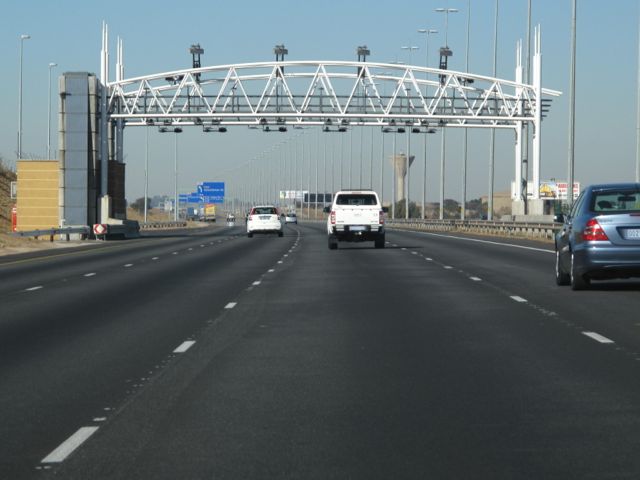
Road Network Operations
& Intelligent Transport Systems
A guide for practitioners!

Road Network Operations
& Intelligent Transport Systems
A guide for practitioners!
The reason why a route may be tolled is most often to recover some or all of the costs of construction, operation and maintenance of roads, bridges, and tunnels. Tolls collected are:
Part of the revenue collection process can be automated to improve operating efficiencies and reduce the operating cost of toll collection by means of Electronic Toll Collection (ETC). Prior to the introduction of ETC tolls were collected manually – involving the construction of large “toll plazas” on motorways with multiple toll booths.
ETC is now an established means of payment for road usage – and ETC may be offered alongside cash and cards at a toll plaza. When a high proportion of vehicles are equipped for electronic payment, it is feasible to provide ETC as the only means of payment – in which case, toll plazas may not be required at all.
ETC needs to be supported by an adequate legal framework and enforcement processes. It may make use of:
To be efficient, a toll collection facility should accept several Means of Payment (MOP), including cash and credit cards. Toll plazas may be used as an effective means of regulating vehicle flow to ensure that the drivers of all vehicles provide a valid payment or provide some evidence that they are exempt from tolls. Since its first commercial application in October 1987, ETC has been accepted worldwide as an additional means of payment since it is a highly reliable, efficient and accurate way of tolling that offers convenience since drivers do not have to stop to pay. ETC also provides a higher throughput compared to other means of payment. ETC is found in almost every country with a mature road network such as Australia, China, Colombia, France, India, Mozambique, Norway, South Africa, Spain and the US, amongst many others. Video: Interoperable Electronic Toll Collection( ETC) on NH-8
Typically, the technologies for ETC include vehicle detection, classification and some form of account identification such as:
As vehicle demand increases, the capacity of a toll plaza must also increase – either by adding new toll lanes or by increasing the throughput of existing lanes. This can be done by adding ETC capability with incentive discounts. Ideally the ETC will be interoperable with other toll collection facilities to:
As demand increases yet further – or if there are constraints on land usage for toll plazas – it may be necessary to consider implementing Multi-lane Free-flow (MLFF) tolling which reduces or removes completely the requirement for toll plazas. MLFF will increase the speed and volume of vehicle throughput but requires robust enforcement mechanisms. Video: Gantry installation at the Dartford Crossing - time-lapse


Toll collection is a highly standardised process. Using ETC it can be automated to improve operational efficiency and minimise the cost of processing every vehicle passage. For drivers to experience the benefits of non-stop payment of tolls, a sufficient number of lanes need to be equipped with vehicle detection and classification technology and ETC readers, supported by an enforcement system (See Back Office/Enforcement). As demand increases more lanes on each toll plaza can be equipped with ETC. Some lanes can offer multiple Means of Payment (MOP) – manual and ETC with other lanes dedicated to ETC only.
Where it is not possible to create space for a toll plaza (for example, in an urban environment or where it is not practical to disrupt the flow of traffic on an existing motorway), Multi-lane Free Flow (MLFF) tolling may be used. This:
In all cases, if compliance checks fail, enforcement is necessary using the images captured by the cameras (See Back Office/Enforcement). To maximise accessibility, users that still wish to pay by cash or credit card may be given the option of paying at retail outlets or via the Internet. Similarly occasional users may be able to register for a video tolling account – although a premium may be applied to reflect the additional cost of processing video images compared with more accurate, lower error tag-based transactions.
There are examples of MLFF systems in Australia, Canada, Chile, New Zealand and the US – with more recent introductions in China, Ireland and South Africa. Each of these uses either RFID or DSRC tags as the primary Means of Payment (MOP) and offer video tolling as a secondary solution.
Advances in satellite positioning mean that tolls can now be calculated based on the time, distance travelled or the location of the vehicle on the road network. These are measured using an On-board Unit (OBU) that has the capabilities to estimate its own position via Global Navigation Satellite System (GNSS) and to communicate this information over a Cellular Network (CN). A GNSS/CN-based scheme is an advanced method of tolling and is used in some countries for HGV tolling (See Heavy Good Vehicle Tolling).
ETC provides the opportunity to automatically link a vehicle with an account that is to be charged with the required tolls. This improvement in efficiency benefits road users and toll road operators by reducing congestion, reducing harmful emissions and improving throughput. The tolling policy, security issues, construction and operating costs and other constraints such as the availability of land will determine which is the most appropriate deployment strategy and technology to use:
As the usage of ETC increases, the need to collect payments in cash reduces. The cost of investing in ETC systems is high. Inevitably, there will be improvements in technology over time (for example, mobile phone payment, contactless payment cards) with the risk that that a tolling solution may be overtaken. Improvements in performance and reductions in cost (particularly of tags and On-Board Units) may offer long-term operational benefits – to the extent that an upgrade may need to be considered.
Procuring RFID or DSRC systems that comply with standards make it easier to have a broader choice of suppliers and avoid “technology lock-in”. A periodic review of technology options will help to inform the scope and potential cost of a replacement system or upgrade to the current technologies.
From an operational perspective, it may be a good idea to move away from each toll operator maintaining its own back-office. A separation of ETC account management from other aspects of tolling operations – as demonstrated in Europe (Ireland) – can encourage the emergence of specialised back-office support able to service a number of different operators, with corresponding efficiency savings (See Standardisation & Interoperability).
ETC has been proven to be a viable means of automating toll collection in developed and developing economies. If cash payments for tolls are an accepted form of payment en-route, a toll plaza is needed. These can offer a range of Methods of Payment (MOP), including ETC. The enforcement strategy could include a barrier or a traffic light that prompts road users to present a valid MOP on entry to, or exit from, a tolled route (See Back Office/Enforcement).
For occasional users, video tolling could be offered. Where an accurate national register of vehicles exists, it becomes possible to operate toll lanes without barriers – since the register enables association of a vehicle and its number plate with a specific person or company. Instead of barriers, cameras can be used to capture images of evidential-quality to prove that the vehicle was present for enforcement purposes.
If the public acceptability for tolls is low, and the risk of payment evasion is high – a barrier to control the flow of vehicles is likely to be the most practical option, even if an accurate vehicle register exists.